| Proper backing: The best way to create backing
for a shower pan is to use a 2x10 in between the studs. However, I've seen anything from 2x4 to 2x12 and even
combinations of different sizes. The idea is to create a sturdy 10 inch base to adhere the side walls of the
tar pan. If you can't put backing between the walls due to plumbing or some other obstruction, you can use flashing
to span gaps between 5 and 10 inches. Gaps smaller than 5 inches don't need to be flashed. |
|
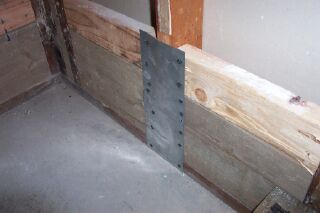 |
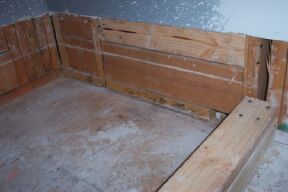 |
| 1. This guy went a little overboard with the
flashing, but he did a nice job. He added a 2x4 on top of what looks like a 2x8. This provided a nice
base at the top of the side walls of the pan in which to nail the green board. |
2. Here's a remodel showing
stacked 2x6. |
| |
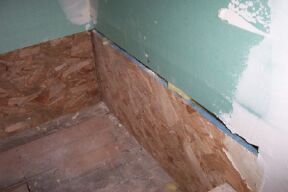 |
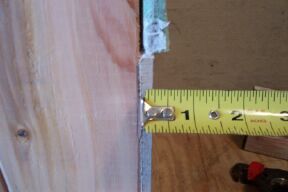 |
| 3. This is what you don't want
to happen! I was surprised to find out a tile contractor did this. He nailed a piece of particle board
that was as thick or thicker than the green board. After I create the pan the side walls will add another
1/4 to 3/8 of an inch. The side
walls of the pan are in front of the green board. This situation can create problems in the future
if water gets behind there. If you're going to nail plywood or particle board on the outside of the studs
don't use anything thicker than 1/4 inch. |
4. The side walls of the tar pan should finish behind the face
of the sheet rock (green board). The finished thickness of the tar pan side wall is between 1/4 and 3/8 inch.
If you use this method of backing (nailing a sheet of plywood or particle board over the
studs rather than nail a 2x10 in between) DO NOT
use anything thicker than 1/4 inch. It tends to push the side walls of the pan out past the sheet rock creating a weak point for
water to sneak behind and do damage. Also it can cause problems for the tile contractor when floating the walls or applying
wonder board by adding thickness to the reveal of the side walls creating a large, ugly, varied grout joint. |
| |
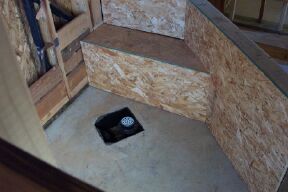 |
|
| 5. In this case the contractor
used 3/8-1/2 particle board to cover the seat and pony wall. This is acceptable because there will
be no sheet rock nailed down to the top of the seat or on the pony wall. The whole thing will
be covered with tar and eventually with mortar. It's also ok to use a thicker plywood on tub deck walls as
well. |
|









